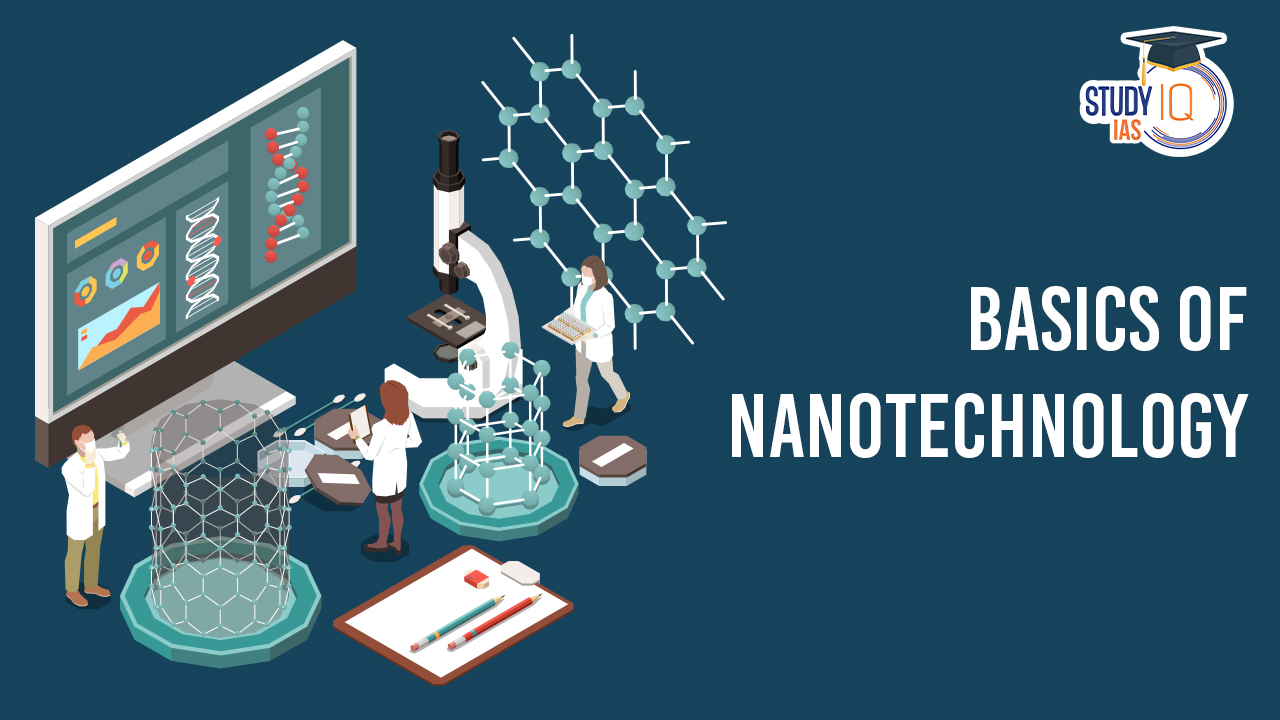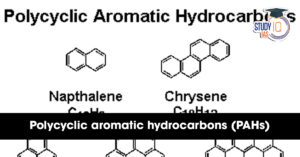Table of Contents
Nanotechnology is a field of science and technology that involves the manipulation and control of matter at the nanoscale, typically within the range of 1 to 100 nanometers. At this scale, unique properties and behaviours emerge that are not present at larger scales. Nanotechnology encompasses a wide range of disciplines, including physics, chemistry, biology, materials science, and engineering. Here are some key aspects and basics of nanotechnology.
We’re now on WhatsApp. Click to Join
What is Nanotechnology?
Nanotechnology is the science and engineering of designing, producing, and using structures, devices, and systems by manipulating atoms and molecules at the nanoscale. Nanoscale is defined as having one or more dimensions of the order of 100 nanometres (100 millionth of a millimetre) or less.
At the nanoscale, surface area and quantum mechanical effects become important in describing the properties of matter. Nanotechnology promises scientific advancement in many sectors such as medicine, consumer products, energy, materials, and manufacturing. One example of an application of nanotechnology is the synthesis of nanoparticles. This involves building up materials from smaller components, such as atoms or molecules, using techniques such as chemical synthesis or self-assembly.
What is Nanoscale?
Nanoscale refers to objects with dimensions between 1 and 100 nanometers (nm). A nanometer is a unit of length that is equal to one billionth of a meter. The word “nano” comes from the Greek word for “dwarf”. Nanotechnology is the manipulation of matter at the nanoscale. At this scale, surface area and quantum mechanical effects become important in describing the properties of matter.
Nanoscale materials have unique optical, magnetic, or electrical properties. For example, ultrafine particulate matter is a well-known example of nanoscale particles found in the environment.
Applications of Nanotechnology
Medicine and Healthcare
- Drug Delivery: Nanoparticles can be engineered to deliver drugs directly to targeted cells, improving efficacy and reducing side effects.
- Medical Imaging: Nanoscale materials enhance the contrast and sensitivity of medical imaging techniques, such as MRI and CT scans.
- Diagnostic Tools: Nanosensors enable the detection of specific biomarkers, facilitating early diagnosis of diseases.
Electronics and Computing
- Nanoelectronics: Nanoscale transistors and other electronic components enable the development of faster and more energy-efficient electronic devices.
- Quantum Dots: Nanoscale semiconductor particles with quantum properties find applications in displays, solar cells, and imaging technologies.
Materials Science
- Nanocomposites: Adding nanoparticles to materials can enhance their mechanical, thermal, and electrical properties, leading to stronger and more durable materials.
- Self-Healing Materials: Nanoparticles enable the development of materials that can repair themselves when damaged.
Energy
- Solar Cells: Nanomaterials, such as quantum dots, can improve the efficiency of solar cells by capturing and converting light more effectively.
- Energy Storage: Nanotechnology plays a role in the development of advanced batteries and supercapacitors for energy storage.
Environmental Remediation
- Water Purification: Nanomaterials like nanofilters and nanocomposites are used for the efficient removal of pollutants and contaminants from water.
- Air Purification: Nanoparticles can be employed in air filters to capture and neutralize airborne pollutants.
Textiles
- Stain-Resistant Fabrics: Nanocoatings on textiles can make them resistant to stains and water, improving durability and cleanliness.
- Smart Textiles: Nanotechnology enables the integration of sensors and other functionalities into textiles for applications like health monitoring.
Food Industry
- Food Packaging: Nanocomposites enhance the barrier properties of packaging materials, reducing spoilage and extending the shelf life of food.
- Food Safety: Nanosensors are employed for detecting contaminants and pathogens in food products.
Cosmetics
- Sunscreen: Nanoparticles like zinc oxide and titanium dioxide provide transparent and effective UV protection in sunscreens.
- Anti-Aging Creams: Nanotechnology is used to deliver active ingredients to the skin at the nanoscale for improved penetration and efficacy.
Space Exploration
- Lightweight Materials: Nanomaterials contribute to the development of lightweight and durable materials for spacecraft and space exploration equipment.
Automotive Industry:
- Fuel Efficiency: Nanotechnology is employed to develop lightweight materials and coatings, contributing to fuel efficiency in vehicles.
Implications of Nanotechnology
| Implications of Nanotechnology | Description |
| Risks to Human Health |
|
| Environmental Issues |
|
| GREY GOO Scenario |
|
| Nanotech Fibre |
|
| Smart Matter/Smart Dust |
|
| Semiconductors |
|
| Plasmonic Semiconductor Nanomaterials (PSN) |
|
Nanomaterials
“Nanomaterials” refer to materials that have at least one dimension in the nanometer scale, typically ranging from 1 to 100 nanometers. This field has gained significant attention due to the unique and often enhanced properties exhibited by materials at the nanoscale. These properties can differ from those of bulk materials, leading to novel applications in various fields. Here are some common types of nanomaterials and their applications:
- Nanoparticles: These are particles with dimensions in the nanoscale. They can be made from a variety of materials, including metals, metal oxides, and polymers. Nanoparticles have applications in drug delivery, imaging, catalysis, and electronics.
- Carbon Nanotubes (CNTs): These are cylindrical structures composed of carbon atoms. They exhibit exceptional mechanical, electrical, and thermal properties. CNTs find applications in nanoelectronics, composite materials, and as drug-delivery vehicles.
- Graphene: A single layer of carbon atoms arranged in a hexagonal lattice, graphene is known for its remarkable strength, electrical conductivity, and thermal conductivity. It has applications in electronics, energy storage, and as a reinforcement material in composites.
- Nanocomposites: These are materials composed of a matrix with nanoscale reinforcement. The addition of nanomaterials enhances the mechanical, thermal, and electrical properties of the composite. Nanocomposites are used in aerospace, automotive, and construction industries.
- Nanowires and Nanorods: These are elongated structures with diameters in the nanoscale. They find applications in sensors, and electronics, and as building blocks for nanodevices.
- Quantum Dots: These are semiconductor nanoparticles with quantum confinement properties, resulting in size-dependent electronic and optical properties. Quantum dots are used in biological imaging, solar cells, and displays.
- Nanofibers: Extremely thin fibers with diameters in the nanoscale. Nanofibers have applications in filtration, tissue engineering, and drug delivery.
- Nanoporous Materials: Materials with nanoscale pores, such as zeolites and metal-organic frameworks. They are used in gas storage, catalysis, and separation processes.
- Nanoparticles in Medicine: Nanomaterials are extensively researched for medical applications, including drug delivery, imaging, and diagnostics.
Advantages of Nanotechnology
- Improved Properties: Nanomaterials often exhibit enhanced or unique properties compared to their bulk counterparts. This includes increased strength, conductivity, reactivity, and optical properties.
- Medicine and Healthcare: Nanotechnology has revolutionized medicine with applications in drug delivery, imaging, and diagnostics. Nanoparticles can be designed to target specific cells, reducing side effects and improving treatment efficacy.
- Energy Efficiency: Nanomaterials contribute to the development of more efficient energy storage devices, lightweight and strong materials for transportation, and improved solar cells.
- Electronics and Computing: Nanotechnology has enabled the development of smaller and more powerful electronic devices. Components at the nanoscale enhance computing power and energy efficiency.
- Environmental Remediation: Nanomaterials are used for environmental applications such as water purification, air filtration, and remediation of contaminated sites.
- Food Industry: Nanotechnology is employed in food packaging to enhance freshness and safety. It also contributes to the development of novel food additives and sensors for quality control.
- Materials Science: Nanotechnology enables the creation of advanced materials with tailored properties for specific applications, such as lightweight and strong materials for aerospace.
- Information Technology: Nanoscale technologies are crucial for the development of high-density data storage, faster data transfer, and the advancement of quantum computing.
Challenges and Concerns of Nanotechnology
- Health and Safety Risks: The potential health risks of exposure to certain nanoparticles are not fully understood. Research is ongoing to assess the toxicity and long-term effects on human health.
- Environmental Impact: The release of nanoparticles into the environment raises concerns about their impact on ecosystems. The persistence and behavior of nanomaterials in the environment are areas of active research.
- Ethical Concerns: As with any powerful technology, ethical considerations arise. This includes issues related to privacy, security, and the responsible development and use of nanotechnology.
- Regulatory Challenges: There’s a need for robust regulatory frameworks to ensure the safe development and use of nanomaterials. Standardized testing methods and guidelines are still being developed.
- Cost and Scalability: Some nanotechnologies face challenges in terms of scalability and cost-effectiveness for mass production. This can hinder their widespread adoption in certain industries.
- Public Perception: Lack of public awareness and understanding of nanotechnology may lead to concerns and resistance. Effective communication about the benefits and risks is essential.
- Interdisciplinary Collaboration: Nanotechnology requires collaboration across diverse scientific disciplines. Bridging the gap between fields like chemistry, physics, biology, and engineering can be challenging but is essential for successful development.
Nanotechnology UPSC
Nanotechnology, operating at the nanoscale (1 to 100 nanometers), presents a transformative paradigm across diverse fields. Its advantages encompass enhanced material properties, medical breakthroughs, energy efficiency, and environmental remediation. However, challenges include health and environmental risks, ethical concerns, regulatory gaps, and scalability issues.
Effective interdisciplinary collaboration, ethical governance, and public awareness are imperative for harnessing nanotechnology’s potential while mitigating associated risks. In the context of the UPSC (Union Public Service Commission) examination, understanding these nuances is vital for aspirants grappling with questions on emerging technologies and their societal implications.


 Genetically Modified Crops in India, Reg...
Genetically Modified Crops in India, Reg...
 What are Polycyclic Aromatic Hydrocarbon...
What are Polycyclic Aromatic Hydrocarbon...
 MALE Class Drones: Capabilities, Payload...
MALE Class Drones: Capabilities, Payload...





















